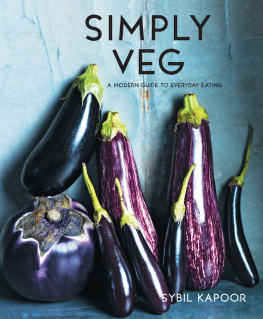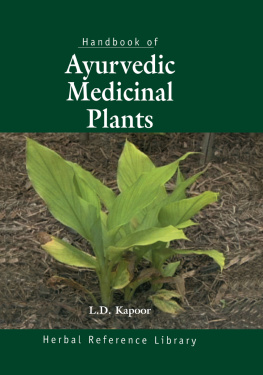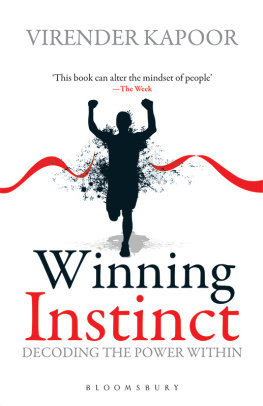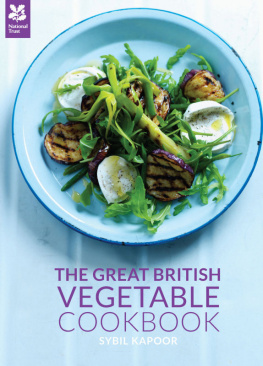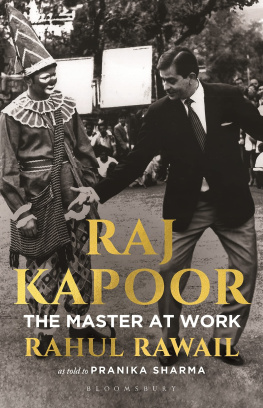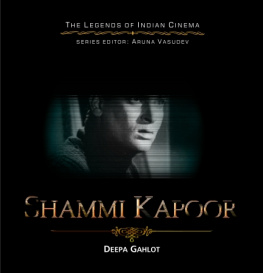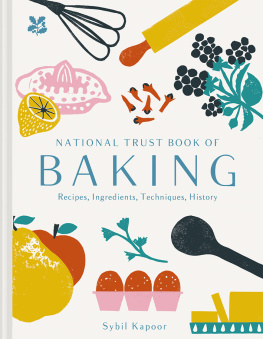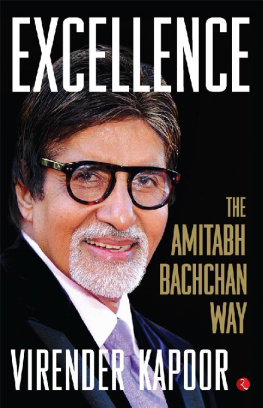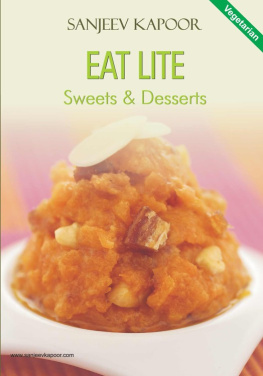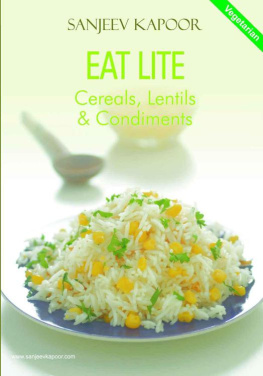Kapoor - Simply Veg
Here you can read online Kapoor - Simply Veg full text of the book (entire story) in english for free. Download pdf and epub, get meaning, cover and reviews about this ebook. year: 2016, publisher: Pavilion Books, genre: Home and family. Description of the work, (preface) as well as reviews are available. Best literature library LitArk.com created for fans of good reading and offers a wide selection of genres:
Romance novel
Science fiction
Adventure
Detective
Science
History
Home and family
Prose
Art
Politics
Computer
Non-fiction
Religion
Business
Children
Humor
Choose a favorite category and find really read worthwhile books. Enjoy immersion in the world of imagination, feel the emotions of the characters or learn something new for yourself, make an fascinating discovery.
- Book:Simply Veg
- Author:
- Publisher:Pavilion Books
- Genre:
- Year:2016
- Rating:5 / 5
- Favourites:Add to favourites
- Your mark:
- 100
- 1
- 2
- 3
- 4
- 5
Simply Veg: summary, description and annotation
We offer to read an annotation, description, summary or preface (depends on what the author of the book "Simply Veg" wrote himself). If you haven't found the necessary information about the book — write in the comments, we will try to find it.
Simply Veg — read online for free the complete book (whole text) full work
Below is the text of the book, divided by pages. System saving the place of the last page read, allows you to conveniently read the book "Simply Veg" online for free, without having to search again every time where you left off. Put a bookmark, and you can go to the page where you finished reading at any time.
Font size:
Interval:
Bookmark:


VEG
A MODERN GUIDE TO EVERYDAY EATING
SYBIL KAPOOR


As you might guess from the title, this is a book about vegetables. Ive written it as a labour of love for both omnivores and vegetarians, who, like me, are fascinated by the incredible array of vegetables that we have at our disposal throughout the year.
It is a book that can be used on three levels. First and foremost, it is designed to be a source of delicious vegetable recipes that you can dip into whenever youre seeking inspiration. Ive divided the book into the four seasons and organized the vegetables in such a way that they appear in their peak season, when theyre at their best and cheapest. Thus, cauliflowers are in the autumn section, although you can buy them throughout much of the year. Within each season, the vegetables are organized roughly in order of their appearance. Spring, for example, which officially runs from March to May in the northern hemisphere, begins with purple sprouting broccoli and ends with the arrival of the first new potatoes. At the end of each vegetable section, youll find a list of recipes that use the vegetable elsewhere in the book.
Secondly, Simply Veg can be read as an unusual manual to develop your cooking skills. I wanted to give further insight into how best to enhance your chosen vegetable. Each vegetable section includes practical tips and culinary suggestions, but if you turn to the seasonal introductions you will find all sorts of thought-provoking ideas that may influence how you cook. Many of them lie at the heart of my philosophy of cooking and are not commonly discussed in cookbooks. In the introduction to spring, for example, I explore the power of suggestion, discuss how to make vegetables more attractive and appetizing to people who dislike them, and look at sources of inspiration when trying to create a spring dish. My aim, as always, is to stimulate both thought and pleasure.
Lastly, but equally importantly, the book aims to encourage cooks into sourcing interesting and sustainably grown vegetables. There are many exciting initiatives ranging from community-supported farms and local allotments to organic box schemes and Farmers markets. I suggest a different way of sourcing vegetables in each of the seasonal introductions.
Cooking with lots of seasonal vegetables has always represented an ideal way of life. Deep within our psyche, consuming vegetables symbolizes an almost spiritual sense of oneness with the natural world. Its as though every time you buy a floppy lettuce from your local farmers market for salad, or pull up some leeks from your garden for a pie, youre working in harmony with your surroundings. Eating home-grown vegetables is imbued with positive values, ranging from good health to thriftiness its like taking a bite of positivity every time you munch a radish!
Nevertheless, over the years, there have been surprisingly few books dedicated to the pleasures of cooking with vegetables, especially for omnivores. I should add here that vegetarians can easily adapt many of the meat or fish recipes in this book, so dont be discouraged. My primary aim throughout the book has been to create recipes that bring out the very best of each vegetable. A naturally sweet onion, for example, tastes even better with a hint of sourness, whether it is soaked in buttermilk before being coated in semolina and deep-fried to make ultra-crispy onion rings, or baked in a tart with soured cream.
An early pioneer in writing vegetable cookery was Jane Grigson. In 1978 she published Jane Grigsons Vegetable Book, which listed vegetables alphabetically, placed each within its broad historic context and gave a wide variety of recipes. Her book included pulses and imported supermarket exotics, such as sweet potato, bean shoots and okra. Her book became a blueprint for many of the vegetable cookbooks that followed.
My criteria are slightly different insofar as I want to encourage cooks to use more local produce within its natural season, which means only selecting home-grown vegetables. Obviously, this will vary from country to country, but the idea remains true. Much pleasure is to be had from eating food in its prime.
As I started to research the book, I quickly realized that our approach towards vegetables and how to cook them is shaped by national self-image and changing attitudes across the world. Over the centuries, most countries have avidly collected vegetables from far and wide, fuelled by a desire for new and interesting foods. Once the said plants were safely home, each nation has set about trying to improve their flavour and productivity. Such work continues today: British plantsmen and women, for example, still travel to the wilds of China and South America to find new and interesting vegetables. Meanwhile, Dutch farmers, like many others around the world, still strive to improve their produce from organic peppers to sweet-hearted cabbages.
As cooks travelled and sampled foreign vegetable dishes, so each countrys culinary repertoire changed. The British may have first been introduced to aubergines in the sixteenth century, but it was only after the advent of cheap foreign holidays in the late twentieth century that they became popular. After all, aubergines dont suit being prepared in the classic early twentieth century British manner, namely boiled, and buttered or tossed in a sauce, but once Mediterranean dishes, such as ratatouille and moussaka, had been sampled, it was only a matter of time before they started to be grown and eaten in Britain.
Today, people are experimenting even more with different ways of cooking vegetables. The more we travel and interact on social media, the easier it becomes to apply the best cooking methods from around the world to our chosen vegetable, from Chinese-influenced stir-fried greens with mustard seeds to Indian influenced carrot and cardamom cake. This is an internationally inspired selection of recipes, albeit shaped to my taste. I also make full use of imported ingredients, such as olive oil and soy sauce. I am, after all, following in the footsteps of my ancestors, who kept a well-stocked larder full of exotic flavourings to enhance their cooking.
All of which leads me on to older varieties of vegetables. Over the centuries, vegetables and vegetable varieties have fallen in and out of fashion, and it is well worth seeking out such unfamiliar vegetables as some of them taste amazing while yet others look fabulous. One of the easiest ways to discover them is to read heritage seed catalogues and search out specialist garden centres. You will discover wonderful plants such as Clayworth Prize Pink celery and scorzonera. Hence, you will find a section for salsify and scorzonera in this book, despite the fact that, unless you grow it, its not easy to find both taste gorgeous. Sadly, lack of space has meant that Ive had to be quite ruthless in my selection, so you wont find kohlrabi or sea kale. Please forgive any such omissions on my part.
Lastly, when you turn to the end of the book, you will see a section entitled In a Perfect Kitchen, which includes recipes for everything from pastry to pitta bread. Like so much of this book, it represents an ideal. In a perfect world, there are certain foods that are good to have to hand, whether theyre home-made stock or pizza dough home made tastes so much better than shop bought. However, many cooks suffer from lack of time and, as always in life, its a fine balance. If youre someone who enjoys cooking as a form of relaxation, then you will take great pleasure in making everything from scratch and freezing some of it for future use, but if you are pressurized, its better to be pragmatic and buy what you need. I have no wish to engender guilt, quite the reverse; my hope is that you will find endless hours of enjoyment from this book.
Next pageFont size:
Interval:
Bookmark:
Similar books «Simply Veg»
Look at similar books to Simply Veg. We have selected literature similar in name and meaning in the hope of providing readers with more options to find new, interesting, not yet read works.
Discussion, reviews of the book Simply Veg and just readers' own opinions. Leave your comments, write what you think about the work, its meaning or the main characters. Specify what exactly you liked and what you didn't like, and why you think so.

